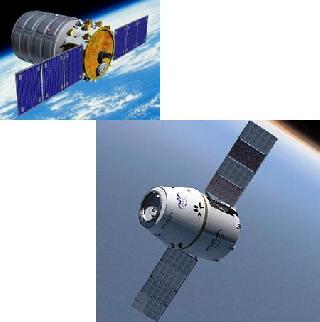
The Cygnus (top) and Dragon space capsules.
By Ritu Mousumi Tripathy
Delivery of cargo, including scientific payloads, consumables and fuel to the International Space Station (ISS) has been an essential part of all space station operations as the orbital laboratory is frequented by astronauts/cosmonauts.
While Russia’s Progress spacecraft, launched by the Soyuz rocket, has remained a reliable unmanned resupply vehicle that continues to deliver tons of cargo to the space station every year and will continue to do so following the retirement of NASA’s space shuttles, cargo vessels of Japan and Europe too have joined in replenishing the ISS and bringing back waster material from there.
The H-II Transfer Vehicle (HTV) or ‘Kounotori’ spacecraft of Japan has flown to the space station twice since its first mission in 2009. European Space Agency’s automated transfer vehicle (ATV-2) has also supported space supply missions since its first launch to the ISS in 2008.
With all three shuttles of NASA – Discovery, Endeavour and Atlantis, used to serve the dual purpose of ferrying astronauts as well as instruments to the scientific laboratory – set to retire later this year, the space agency has embarked on an ambitious programme to develop new commercial space vehicles for the delivery of crew and cargo to the ISS.
Under the Commercial Orbital Transportation Services programme announced on January 18, 2006, NASA awarded two contracts, one to SpaceX and the other to Orbital Sciences Corporation, to design the new spacecrafts along with the launch rockets that will fly to the ISS.
The contracts include at least 12 missions for SpaceX and eight missions for Orbital Sciences between 2011 and 2015 carrying cargo to the ISS as well as disposal of ISS waste.
This ambitious programme gave birth to Dragon – the spacecraft designed by commercial firm SpaceX – to initially carry cargo to the space platform and perhaps astronauts in future.
In a first successful test, the bullet shaped space capsule was launched by SpaceX’s Falcon 9 rocket on December 8, 2010. The spacecraft entered orbit about 10 minutes after the launch, circled the Earth twice before re-entering the atmosphere from low orbit, and then splashing down into the Pacific Ocean.
This successful launch pushed NASA’s ambition to commercialise space launch services closer to becoming a reality.
The Dragon freighter, once operational, is expected to ferry six tons of food, water, air and other equipment to the ISS.
NASA hopes to use the Falcon-Dragon combo for all such missions with the first supply run expected as early as 2012.
The other commercial space freighter in the making is the Cygnus spacecraft being developed by US’s Orbital Sciences Corporation in partnership with France’s Thales Alenia Space.
The cylinder-shaped Cygnus freighter will have two basic components – the service module containing avionics, communications, command and control, and the pressurised module to carry up to six tons of supplies, spares and scientific experiments to the ISS.
The Cygnus spacecraft will be launched by the Taurus II launch vehicle being developed by Orbital Sciences.
Work on the Taurus II expendable launch system is going on in full swing with its first launch expected to take place later this year.
Both the Dragon and Cygnus space capsules are being designed to support NASA in its space missions till the space agency develops its own spacecraft – the Orion – which will primarily take astronauts to Moon and beyond and will also operate as a cargo vehicle and fly on supply missions to the orbital science laboratory.
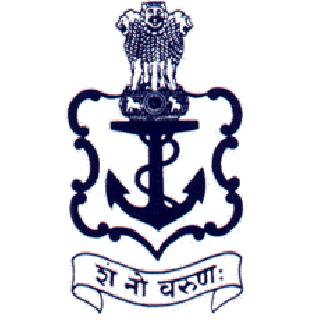 Previous Article
Previous Article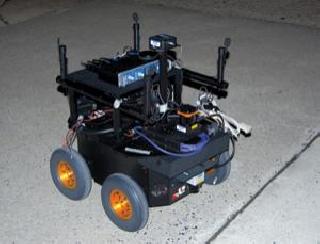 Next Article
Next Article


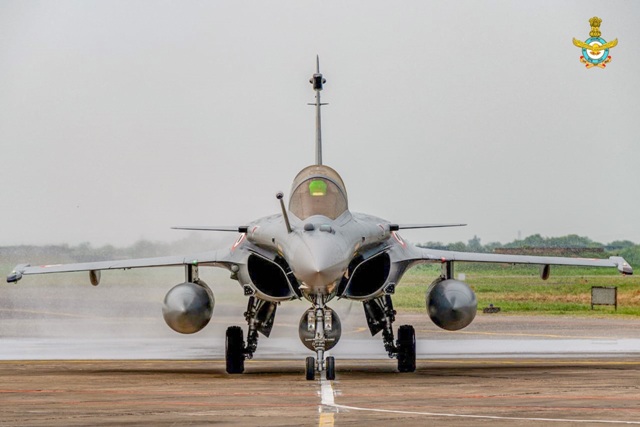

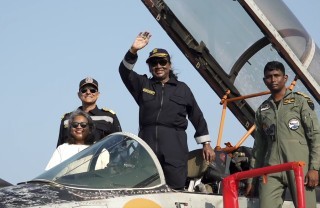






The Indian Air Force, in its flight trials evaluation report submitted before the Defence Ministry l..
view articleAn insight into the Medium Multi-Role Combat Aircraft competition...
view articleSky enthusiasts can now spot the International Space Station (ISS) commanded by Indian-American astr..
view article